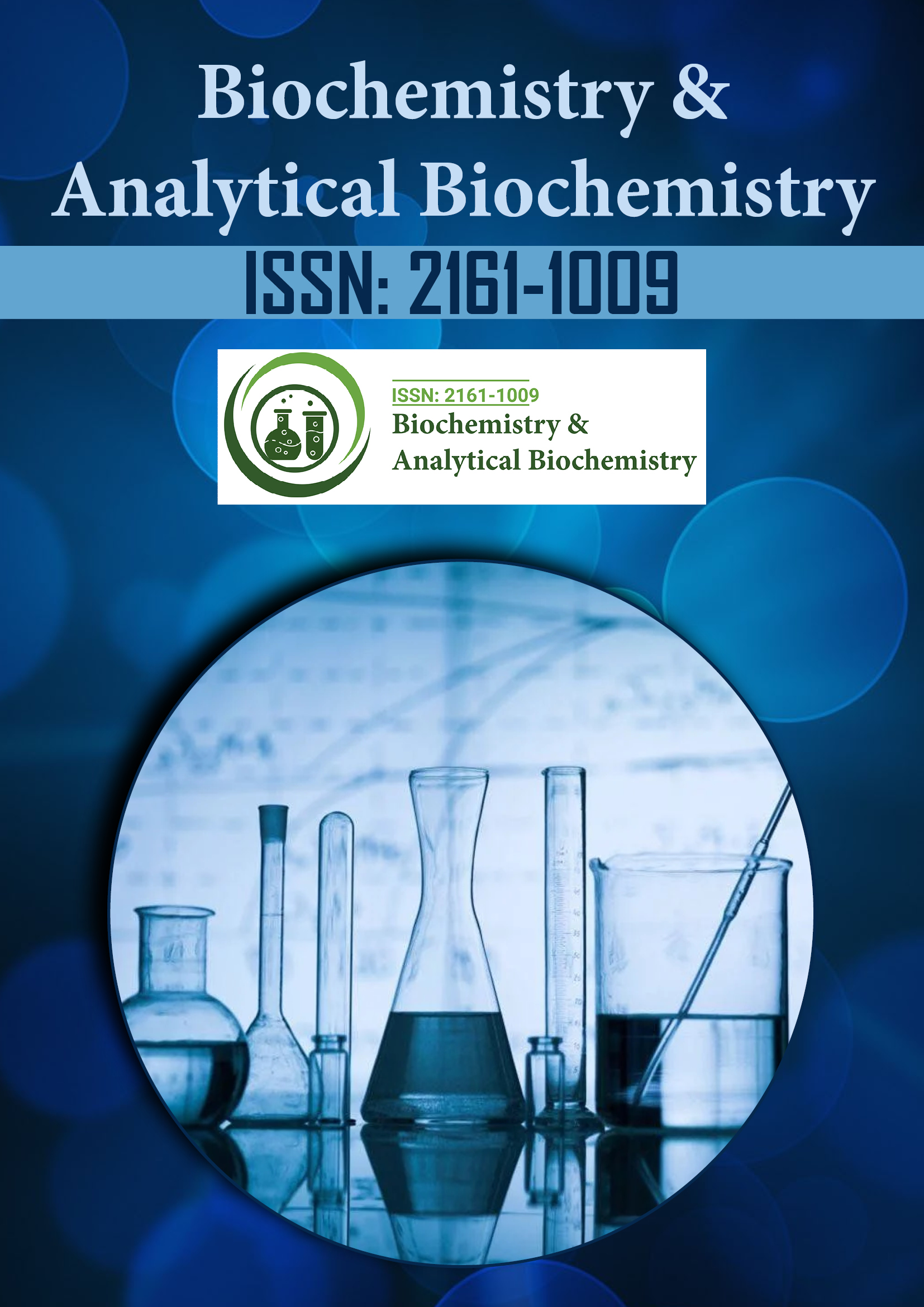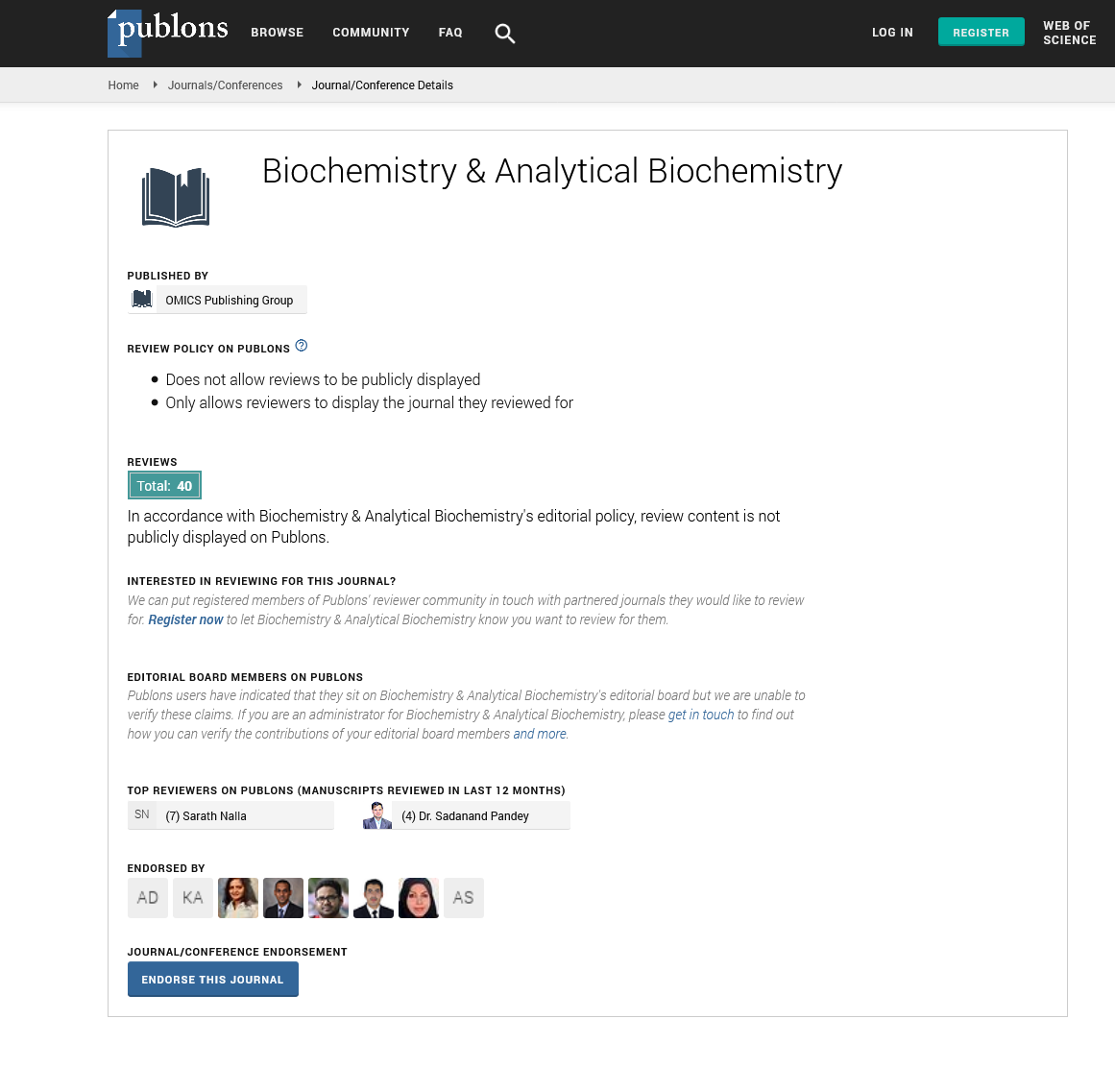Indexed In
- Open J Gate
- Genamics JournalSeek
- ResearchBible
- RefSeek
- Directory of Research Journal Indexing (DRJI)
- Hamdard University
- EBSCO A-Z
- OCLC- WorldCat
- Scholarsteer
- Publons
- MIAR
- Euro Pub
- Google Scholar
Useful Links
Share This Page
Journal Flyer

Open Access Journals
- Agri and Aquaculture
- Biochemistry
- Bioinformatics & Systems Biology
- Business & Management
- Chemistry
- Clinical Sciences
- Engineering
- Food & Nutrition
- General Science
- Genetics & Molecular Biology
- Immunology & Microbiology
- Medical Sciences
- Neuroscience & Psychology
- Nursing & Health Care
- Pharmaceutical Sciences
Short Communication - (2025) Volume 14, Issue 1
Rapid Detection of Lactate as a Stress Biomarker Using a Paper-Based Colorimetric Assay
Manoj Varrier*Received: 03-Mar-2025 Editor assigned: 05-Mar-2025 Reviewed: 19-Mar-2025 Revised: 26-Mar-2025 Published: 02-Apr-2025, DOI: 10.35248/2161-1009.25.14.576
Description
The assessment of biochemical stress markers has increasingly become vital in both clinical diagnostics and sports physiology. Among various indicators, lactate is a well-established biomarker that reflects anaerobic metabolism and is often elevated during tissue hypoxia, sepsis, strenuous exercise and even psychological stress. Conventional methods of lactate estimation such as enzymatic assays or High-Performance Liquid Chromatography (HPLC) require sophisticated equipment, trained personnel and are unsuitable for point-of-care settings. In this short communication, we present the development and preliminary validation of a paper-based, low-cost, colorimetric assay for the rapid detection of lactate from small volumes of blood or sweat.
The foundation of our method lies in integrating Lactate Oxidase (LOx) onto a nitrocellulose substrate, which catalyzes the oxidation of lactate to pyruvate and Hydrogen Peroxide (Hâ??Oâ??). The generated Hâ??Oâ?? subsequently reacts with a chromogenic substrate 3,3′,5,5′-Tetramethylbenzidine (TMB) in the presence of Horseradish Peroxidase (HRP), producing a visible blue color. The intensity of the color is proportional to the concentration of lactate and can be quantified using a smartphone camera and an accompanying mobile application that analyzes RGB values.
The fabrication process is straightforward and suitable for mass production. Circular detection zones (5 mm diameter) were patterned on the paper using wax printing. The detection chemistry LOx, HRP, and TMB was immobilized within the hydrophilic region using a one-step drop-casting method. The reagents were stabilized with trehalose and Polyethylene Glycol (PEG) to ensure enzyme longevity and minimize degradation under ambient conditions. Once dried, the test strips were vacuum-packed and stored at room temperature [1–3].
For validation, we tested our assay with lactate-spiked artificial sweat and finger-prick blood samples. The colorimetric response was linear in the physiological range of 0.5 to 20 mM, with a Limit of Detection (LOD) of approximately 0.35 mM. The results correlated well with those obtained using a commercial enzymatic lactate assay kit (Pearson correlation coefficient, r=0.93). Importantly, the assay completed color development within 4 minutes at room temperature, offering a rapid turnaround suitable for field use.
In a pilot study involving 20 volunteers performing a 15-minute high-intensity cycling protocol, sweat was collected on absorbent patches and applied to the test strips. Post-exercise lactate levels ranged from 5 to 18 mM, and the paper-based readings matched venous blood lactate measurements within ± 1.2 mM for 85% of the participants. These results validate the utility of sweat as a surrogate fluid and the practical applicability of our device [4–7].
Several features distinguish our assay from existing paper-based sensors. First, its dual compatibility with both blood and sweat extends its utility to diverse settings, including sports, emergency medicine, and remote healthcare. Second, the visual readout is intuitive and semi-quantitative, with color intensities ranging from light blue (low lactate) to deep navy (high lactate), allowing users to interpret results even without a digital interface. Third, the use of stabilized enzymes and the elimination of external power sources make it ideal for use in low-resource environments.
Of course, limitations exist. The strip's accuracy may be affected by strong oxidizing or reducing agents present in contaminated sweat. Long-term storage stability beyond 3 months needs further testing and cross-reactivity with other metabolites, though minimal in our tests, requires large-scale population studies to confirm. Furthermore, while smartphone analysis improves quantification, the absence of a standardized light source may introduce variability in color readings across devices.
Nonetheless, the broader implication of our work lies in democratizing biochemical diagnostics. As the global health landscape shifts toward decentralized care, such affordable and scalable tools become indispensable. Paper-based biosensors, owing to their simplicity and adaptability, represent the future of rapid biochemical assays and lactate monitoring is only the beginning. Similar platforms can be extended to detect glucose, uric acid, cortisol and other biomarkers critical for health monitoring [8–10].
References
- Kasey EY, Mitra S, Meng Q, DelRosario I, Devaskar SU, Janzen C, et al. Diet, polycyclic aromatic hydrocarbons, and oxidative stress biomarkers in pregnancy: A Los Angeles pregnancy cohort. Environ Res. 2025;275:121399.
- Eick SM, Celia-Sanchez ML, Woodruff TJ, Goin DE, Padula AM, Cushing L, et al. Experiences of multiple psychosocial stressors and associations with oxidative stress biomarkers during pregnancy. Free Radic Biol Med. 2025;233:70-76 .
- Musazadeh V, Mahmoudinezhad M, Hamidi N, Falahatzadeh M, Shidfar F. Effects of walnut consumption on biomarkers of oxidative stress: A systematic review and meta-analysis of randomized controlled trials. Prostaglandins Other Lipid Mediat. 2025.
- Siwakoti RC, Rosario-Pabon Z, Vega CM, Hao W, Alshawabkeh A, Cordero JF, Watkins DJ, et al. Assessment of Per-and Polyfluoroalkyl Substances (PFAS) exposure and associations with oxidative stress biomarkers among pregnant women from the PROTECT cohort. Sci Total Environ. 2025;973:179130.
- Sauvain JJ, Wild P, Charreau T, Jouannique V, Sakthithasan K, Debatisse A, et al. Are metals in exhaled breath condensate and urine associated with oxidative/nitrosative stress and metabolism-related biomarkers? Results from 303 randomly selected Parisian subway workers. Environ Int. 2025.
- Holstein HJ, Bouwknegt DG, Visschedijk MC, Bulthuis ML, Reinders-Luinge M, Schoots MH, et al. P0532 Exploring biomarkers of systemic oxidative stress and placental insufficiency in pregnant women with Inflammatory Bowel Disease. Free Radic Biol Med. 2025;19(Supplement_1):i1083-5.
- Ringgold V, Rohleder N. Stress and resilience: Associations of stress biomarkers with different conceptualizations of resilience. Current opinion in behavioral sciences. 2025;61:101463.
- Gao Y, Xu R, Liu H, Jia S, Zhang Y, Meng X, et al. Simultaneous quantification of four urinary biomarkers related to oxidative stress using UHPLC-QqQ-MS/MS. J Chromatogr B Analyt Technol Biomed Life Sci. 2025;1256:124552.
- Martins A, Barboza LG, Vieira LR, Botelho MJ, Vale C, Guilhermino L, et al. Relations between microplastic contamination and stress biomarkers under two seasonal conditions in wild carps, mullets and flounders. Mar Environ Res. 2025;204:106925.
- Justi LH, da Silva JF, Santana MS, Laureano HA, Pereira ME, Oliveira CS et al. Non-steroidal anti-inflammatory drugs and oxidative stress biomarkers in fish: A meta-analytic review. Toxicol Rep. 2025.
Citation: Varrier M (2025). Rapid Detection of Lactate as a Stress Biomarker Using a Paper-Based Colorimetric Assay. Biochem Anal Biochem. 14:576.
Copyright: © 2025 Varrier M. This is an open access article distributed under the terms of the Creative Commons Attribution License, which permits unrestricted use, distribution, and reproduction in any medium, provided the original author and source are credited.

